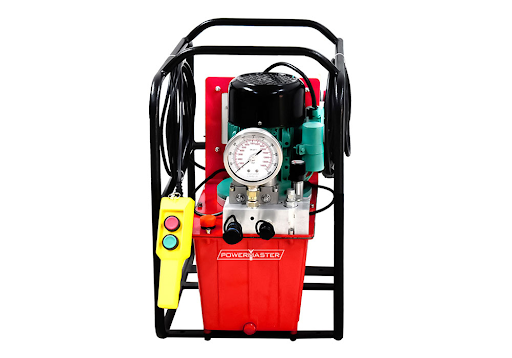Are hydraulic torque wrenches a better option?
In the industry, the normal hand tools are not sufficient in cases involving huge bolts. You need a system that is capable of operating with high torque loads and still makes you not feel tired, and does not compromise on safety. Hydraulic torque wrenches come in handy.
With the use of hydraulic pressure, these instruments precisely tighten and loosen bolts. To produce the force required for heavy-duty applications, they use fluid pressure rather than muscle power. As a result, torque is precise and constant, always meeting precise parameters.
Traditional Methods’ Difficulties
Although manual torque wrenches have their uses, industrial settings are not the best places for them. Hundreds or thousands of foot-pounds of torque on bolts are a major issue when working with a physical constraint. When employees become fatigued, their precision reduces, and the chances of them getting hurt increase.
In addition, conventional methods are more time-consuming. One man with a manual wrench may take hours to accomplish what can be accomplished in a fraction of a second with a hydraulic tool. This is critical in companies where lost time equates to loss of money.
Hydraulic Torque Wrenches: Their Operation
It’s a simple principle. Pressure is produced by a hydraulic pump and gets to the wrench via a hose. The pressure inside the wrench causes a piston to revolve, turning the driving unit. Because of the tremendous mechanical advantage, significant torque may be applied in a controlled manner.
A pump unit, high-pressure pipes, and the wrench itself are included in the majority of systems. Depending on the needs of your site, the pump can be either electric or pneumatic. By displaying the precise amount of pressure you’re applying, digital displays eliminate any room for guesswork.
Accuracy Is Critical
In the process of oil rig work, mining equipment, wind turbine work, or pipeline work, accuracy is crucial. With hydraulic torque wrenches, this discrepancy is removed.
Tolerances for these instruments can be held within 3% of the desired torque. It is practically hard to attain that degree of accuracy with manual techniques, particularly when weariness sets in. On the first bolt, the outcome is the same as on the hundredth.
Efficiency and Speed
In industrial construction and maintenance, time equals money. Manual torque wrenches take longer to finish tasks than hydraulic ones. Sometimes one or two operators can do tasks that traditionally needed a staff of numerous people.
When working on projects with hundreds of bolts, the speed advantage increases proportionally. Turnaround times that were previously weeks can be greatly reduced.
Adaptability to Diverse Uses
These tools adjust to different conditions. Awkward angles and small areas are accommodated by different head types. With sizes ranging from tiny to enormous, square drives may handle everything from light industrial tasks to the most demanding fastening applications.
Hydraulic torque wrenches are used in construction sites, shipyards, power plants, and refineries. They are needed in bridge building, pipeline repairs, and the installation of wind turbines. These tools are useful anywhere large bolts require precision tightening.
Using Stud Tensioners in Practice
Sometimes a stud tensioner is more effective than a torque wrench. These tools do not twist the stud; instead, they stretch it. Torsional tension is removed, and an even more precise preload is provided.
The heavy-duty bolting market is served by both tools, and many businesses combine the two. The decision is based on the particular use, engineering specifications, and available space. For reliable performance throughout your toolkit, both kinds of equipment are powered by hydraulic systems.
Long-Term Budgetary Aspects
Hydraulic torque wrenches demand high start-up costs. Lower labor costs, reduced number of errors, and reduced damage to equipment are, however, the payoff. Also, you save money on hospital bills and lost working hours because of injuries to workers.
The maintenance needs are fair. The system remains functional through routine inspection of hydraulic fluid, hoses, and seals. Good equipment is a wise investment for businesses that frequently handle heavy-duty bolting since it lasts for years when properly maintained.
Conclusion:
You should think about switching to hydraulic equipment if you’re still doing big bolting projects by hand. In the first year of operation, the efficiency gains in speed, accuracy, and safety frequently outweigh the price.
Determine which of your bolting applications are the most difficult first. When things go wrong, figure out how much time you now spend on these duties and the associated expenditures. Compare that with what contemporary hydraulic systems can do. In most cases, the numbers speak for themselves.
When accuracy and dependability are crucial, hydraulic torque wrenches have become the norm in some industries. For any operation dealing with heavy-duty fasteners, they offer a workable answer to actual issues.


